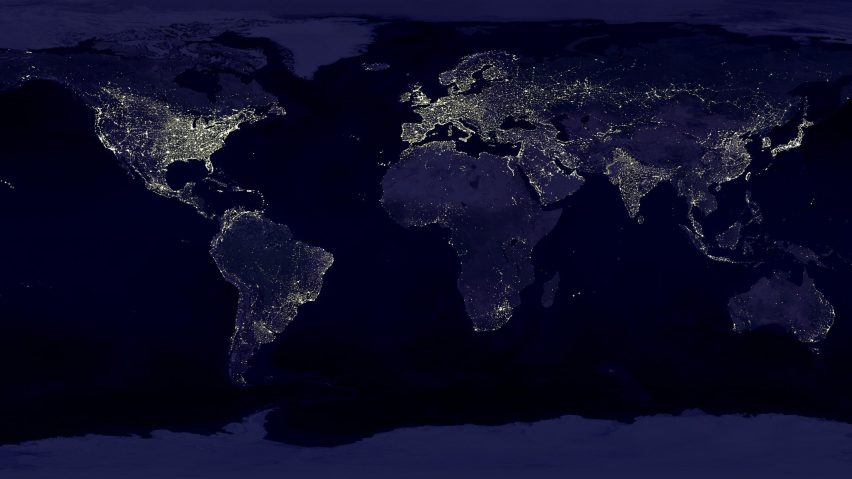We are entering a new geological era: the anthropocene, in which human activity is a dominant influence on earth's geology and environment. At Dutch Design Week, a special edition of our Good Design for a Bad World series will ask if design can harness this phenomenon to prevent global catastrophe, writes Marcus Fairs.
"Humans are clever. They can solve problems. There is hope." These words are not mine but, more or less, what designer Thomas Heatherwick said to me last week at the Dezeen Awards judges' dinner.
He said this in response to my despair over the news that, according to the terrifying new report from the United Nations' Intergovernmental Panel on Climate Change (IPCC), we have just 12 years to prevent environmental catastrophe.
My personal concern was echoed by designer Nicolas Roope, whose idea for a column exploring how design could help avert disaster emerged over a despondent email conversation that same day.
The topic for this year's talk Good Design for a Bad World is the anthropocene
Yet Roope ended his doom-laden column with a rallying cry to designers: "This is perhaps the biggest challenge humankind has ever faced, and also perhaps its most exciting... let's start designing the future that gives us a future. Now."
The UN report, and Roope's column, came as we were planning our latest talk: a reprise of last year's Good Design for a Bad World series, which addressed how design could address the tremendous problems the world faces.
Working with Dutch Design Week last October we discussed climate change, refugees, terrorism, pollution and politics.
We had already settled on the topic for this year's talk: the anthropocene. This is a proposed (but not yet scientifically accepted) geological era in which human activity is shaping our planet alongside geological and cosmic forces.
Our civilisation stands at a crossroads: we either act or we die
It is not only changing the climate and polluting the environment but also creating new geological phenomena as, for example, micro plastics and fossil-fuel particles alter sedimentary strata of the earth, creating new minerals.
The release last week of the IPPC's report into the impact of temperature rises of just 1.5 degrees celsius due to human activity act as a terrifying reminder of the fact that our civilisation stands at a crossroads: we either act or we die.
But how should we act? Can design make a difference? The first positive is that we are now aware of the scale of the problem. The second positive is that creative minds, especially those of the young, are determined to act and refuse to give up in despair.
It will never again be business as usual on planet earth
And one thing is certain: it will never again be business as usual on planet earth. Everything will change. Seas will rise, ice caps will melt, coastal areas will flood, whole regions will turn to desert.
So where and how will we live? How will we feed ourselves? How will we interact with the natural ecosystems that are able to survive or adapt? Does geoengineering offer solutions? Or should we instead start designing for higher sea levels and warmer temperatures?
This is what we will discuss in our talk at 4pm on Saturday 20 October, which will take place at Klokgebouw at Strijp-S in Eindhoven, and will be live streamed on Dezeen.
The talk is open to everyone and there is no need to register in advance, but you will need to buy a Dutch Design Week ticket in order to access the Klokgebouw building and attend the talk.
The full line-up of speakers will be announced soon. See the full listing on the Dutch Design Week website for the latest details.

